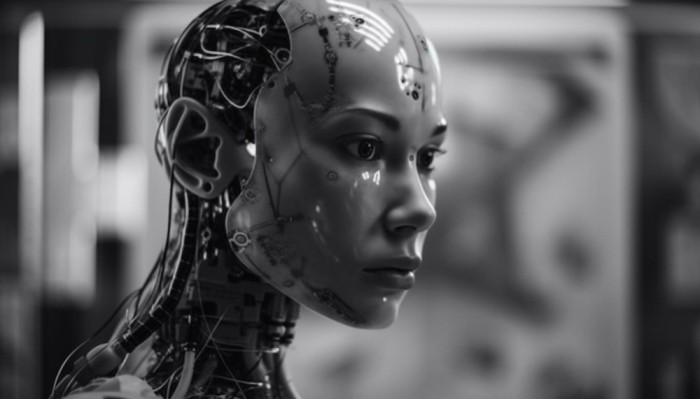Embark on a Journey to the Future Where AI and Robotics Collide!
Artificial intelligence (AI) and robotics are two cutting-edge technologies that have the power to reshape our world. Individually, they have already made significant advancements, but when integrated, they open up a realm of possibilities that were once confined to the realm of science fiction.
In this article, we will explore the exciting frontier where AI and robotics collide, uncovering the potential applications, challenges, and implications of this fusion for the future.
The Synergy of AI and Robotics
The integration of AI with robotics brings together the ability to perceive, reason, and act in a physical environment. AI equips robots with advanced cognitive capabilities, enabling them to understand, learn, and make decisions based on data and experiences. This synergy amplifies the potential of robotics, making them more adaptable, intelligent, and interactive.
Enhancing Robotic Perception with AI
AI enhances robotic perception by enabling them to analyze sensory data and make sense of their surroundings. Machine learning algorithms, combined with sensors like cameras and lidars, allow robots to perceive objects, navigate complex environments, and interact with the world in a more human-like manner.
Intelligent Decision-Making and Adaptability
AI integration empowers robots to make intelligent decisions based on real-time data and situational analysis. They can adapt to changing circumstances, assess risks, and optimize their actions accordingly. This opens up possibilities for autonomous decision-making in critical scenarios and dynamic environments.
Human-Robot Collaboration and Interaction
The collaboration between humans and robots becomes more seamless and efficient with AI integration. Robots can understand human gestures, speech, and intent, facilitating natural and intuitive interaction. This enables robots to assist humans in various tasks, ranging from manufacturing and healthcare to customer service and household chores.
Autonomous Robots and Self-Learning Systems
AI integration drives the development of autonomous robots that can operate independently, learning and improving their performance over time. These self-learning systems can acquire new skills, adapt to different contexts, and continuously refine their capabilities through reinforcement learning and other AI techniques.
Ethical Considerations and Safeguards
As AI-integrated robots become more capable and autonomous, ethical considerations and safeguards become paramount. Ensuring transparency, fairness, and accountability in robot behavior, addressing potential biases, and defining guidelines for safe and ethical use are crucial aspects of AI-robotics integration.
Overcoming Challenges in AI-Robotics Integration
Integrating AI with robotics comes with challenges. Ensuring robust and reliable hardware, managing complex software architectures, handling real-time sensor data processing, and addressing the ethical, legal, and social implications are some of the challenges that need to be overcome for successful AI-robotics integration.
Implications for Industries and Society
The integration of AI and robotics holds significant implications for various industries and society as a whole. From manufacturing and logistics to healthcare and transportation, AI-integrated robots have the potential to enhance efficiency, productivity, and safety. They can also address labor shortages, perform dangerous tasks, and improve the quality of life for individuals.
Looking Ahead: The Future of AI-Integrated Robotics
The future of AI-integrated robotics is filled with possibilities. Advancements in AI algorithms, hardware technologies, and robotic systems will pave the way for even more sophisticated and capable robots. We can anticipate the rise of collaborative robots, swarm robotics, personalized robotic assistants, and the integration of AI and robotics in fields such as space exploration, disaster response, and exploration of extreme environments.
Conclusion
The integration of AI with robotics propels us into a future where intelligent machines can perceive, reason, and act in the physical world. It opens up opportunities for enhancing perception, decision-making, collaboration, and autonomy in robotic systems.
However, it also brings forth ethical considerations, technical challenges, and the need for responsible deployment.
By navigating these frontiers carefully, we can harness the full potential of AI-integrated robotics for the betterment of industries, society, and the future.
FAQs
What is the synergy between AI and robotics?
The integration of AI with robotics combines advanced cognitive capabilities with physical interaction, enabling robots to perceive, reason, and act in the real world.
How does AI enhance robotic perception?
AI enables robots to analyze sensory data and make sense of their environment, enhancing their ability to perceive objects, navigate complex spaces, and interact with the world.
What are the benefits of AI-robotics collaboration?
AI-robotics collaboration enables seamless interaction between humans and robots, facilitating natural and intuitive cooperation in various tasks and domains.
What are the challenges in AI-robotics integration?
Challenges include ensuring reliable hardware, managing complex software architectures, processing real-time sensor data, and addressing ethical, legal, and social implications.
What are the implications of AI-integrated robotics for industries and society?
AI-integrated robotics can enhance efficiency, productivity, and safety in industries such as manufacturing, healthcare, and transportation. They can also address labor shortages and improve the quality of life for individuals.
Embark on a Journey to the Future Where AI and Robotics Collide! Play sprunki phase 28 Anytime, Anywhere!
